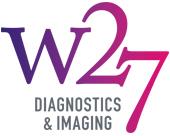Osteoarthritis is a painful degenerative condition caused by a loss of cartilage, which is a type of slippery, protective tissue that cushions the ends of the bones and enables the joints to move smoothly.
It is extremely common and can affect different joints in the body, including the knees, hips, spine and hands. According to Public Health England, around one in five people over the age of 45 in England has osteoarthritis of the knee and one in nine people have osteoarthritis of the hip. Prevalence varies between different local authority areas.
What causes osteoarthritis?
Osteoarthritis is sometimes referred to as ‘wear and tear arthritis’ because it develops when cartilage – which allows the bones to move smoothly over each other when you use your joints – starts to deteriorate. If it wears away completely, bone starts to rub against bone, causing severe pain and loss of mobility.
The condition occurs more commonly as we age and the risk is greater for women, although the reason for this isn’t clear. People who are obese are also more susceptible because carrying too much weight puts greater strain on weight-bearing joints and fat tissue produces proteins that can cause inflammation in and around the joints. Joint injuries and repeated stress on the joint, due to sporting activity or certain types of work, can increase the chance of developing osteoarthritis and certain metabolic diseases including diabetes and bone deformities are also linked to a heightened risk of the disease.
What are the symptoms?
The primary symptoms of osteoarthritis are pain and loss of mobility. Joints become stiff, particularly after periods of inactivity, and may be less flexible. The area may feel swollen and tender, hot or inflamed. Some people experience a grating sensation when they move the affected joint and it may make popping or crackling sounds. Osteoarthritis can cause bony spurs to develop around the affected joint. These may feel like hard lumps and can further reduce mobility.
How is it treated?
Osteoarthritis is normally diagnosed following a physical examination and certain imaging tests such as X-rays may be used to confirm the diagnosis. In the early stages of the disease, you can normally manage symptoms by taking medication such as anti-inflammatories or prescription medication. A TENS machine may help to relieve pain and a physiotherapist can recommend exercises to increase flexibility and improve the strength of affected joints.
As osteoarthritis develops, however, and the pain begins to worsen, your doctor may recommend other approaches. A therapeutic injection into the affected joint is a proven and minimally invasive way to relieve pain. At W27, we routinely offer ultrasound guided injections of corticosteroids and injections of hyaluronic acid for people with osteoarthritis.
How do therapeutic injections work for osteoarthritis?
Therapeutic injections are used for short-term relief from the symptoms of osteoarthritis. While they won’t reverse the degeneration of cartilage caused by the disease, they can help to provide pain-relief and greater mobility in affected joints.
Ultrasound guided corticosteroid injections use ultrasound imaging to guide the position of the needle. This ensures that the steroids are administered to precisely the right place, helping to reduce inflammation and relieve pain. The benefits may take a little while to be felt but can last several months as the medicine is slowly released into the joint. Depending which joint is treated you may be able to have up to four corticosteroid injections a year. Injections of hyaluronic acid may be offered to lubricate joints affected by osteoarthritis. Hyaluronic acid mimics the natural fluid found in joints.

More permanent treatments for osteoarthritis
Because osteoarthritis is a degenerative condition, unfortunately the symptoms are likely to become more severe as the disease worsens and ultimately you may require surgery. Joint replacement surgery is now routine for many different types of osteoarthritis.
For more information about therapeutic injections for osteoarthritis, please refer to our short information video which explains the procedure from start to finish.
SPORTS INJURY TREATMENT | MANCHESTER, LANCASHIRE & CHESHIRE
W27 provides fast, accurate diagnosis and treatment of musculoskeletal symptoms and conditions using the latest state-of-the-art imaging facilities.
For your appointment there is a choice of locations:
The John Charnley Wing, Wrightington Hospital – Hall Lane, Appley Bridge, Wigan, WN6 9EP
HCA The Wilmslow Hospital – 52 Alderley Road, Wilmslow, Cheshire, SK9 1NY
Euxton Hall Hospital – Wigan Road, Euxton, Chorley, PR7 6DY
The Spire Manchester – 170 Barlow Moor Road, Didsbury, Manchester, M20 2AF
The OrthTeam Centre Ohm Building – 168 Barlow Moor Road, Manchester, M20 2AF
MedSerena Upright MRI Centre – 26-28 The Boulevard, Manchester, M20 2EU
Information about our Fees can be found here.
If you have any questions or would like to discuss your options with a specialist, please contact the team to book an initial consultation.











